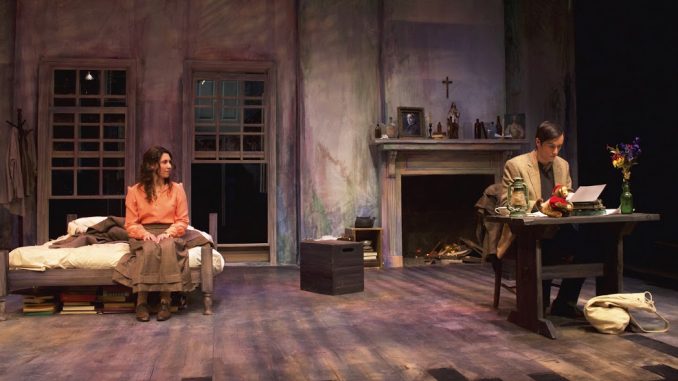
In direct contrast to some of the colorful rural landscapes that would characterize the sets of Irish dramas and cinematography of Irish films later in the 20th century, Seán O’Casey’s The Shadow of a Gunman exists in the drab and stony urban environment of Dublin, Ireland.
In fact, O’Casey was well-known for being one of the first Irish playwrights to even concern himself with the woes of working-class urbanites, with The Shadow of a Gunman kicking off what is now commonly referred to as O’Casey’s “Dublin trilogy” — continuing with Juno and the Paycock in 1924 and The Plough and the Stars in 1926.
Though the United States may not currently be finding itself in anything similar to the Irish War for Independence, the dangers of an encroaching and overbearing government are just as relevant here today as they were in Ireland in 1920, when the play takes place. For this reason, a revival of The Shadow of a Gunman seems nothing if not wholly appropriate, and thanks to the SUNY New Paltz Department of Theatre Arts and Mainstage Productions, fans of local theatre can experience O’Casey’s classic tale of mistaken identity in times of bleak violence.
Zachary Gibson stars as Donal Davoren, a poet living in a tenement slum with his friend Seumus Shields, played by Andres Rodriguez. When Davoren is mistaken for a member of the Irish Republican Army, it becomes an identity he embraces as it earns him notoriety among his neighbors and romantic interest from local tenant Minnie Powell, portrayed here by Jackie Evans. The entirety of the play is set in Shields’ one-bedroom apartment, but through dialogue, O’Casey builds enough of the broader setting to give image to the part of the world we don’t see, the outside climate that characters enter and leave to and from the apartment.
O’Casey was 43 years old when The Shadow of a Gunman first debuted in 1923, and the realism of its urban environments suggest that perhaps O’Casey needed that age and wisdom in order to write such a gritty drama based on horrible dramatic circumstance. It’s that wisdom that also allows the play moments to breathe and indulge in almost-Vaudevillian caricature with some of its characters, like with the alcoholic Adolphus Grigson and his wife, played by Michael Coyle and Stephanie Golub, respectively.
Here, O’Casey treats Grigson’s alcoholism as a quirk rather than a demon, and though that may be less true-to-life than the play as a whole, it gives the actors new ways to maneuver the space. There are only so many ways one can walk through a doorframe, but stumbling is another story. Beyond the thick accents and the sometimes-confusing colloquialisms — there’s even a glossary of terms in the playbill — The Shadow of a Gunman gives its performers the opportunity to challenge themselves physically as well.
The director of this revival, Department of Theatre Arts Chair Jack Wade, described The Shadow of a Gunman in the playbill as “the merger of bawdy Falstaffian characters with the music hall knock-about comedy of late 19th century melodrama,” and it’s hard to argue with that characterization. Though O’Casey is notably more committed to realism than Sir William Shakespeare, he still finds humor in the excess personalities of his characters. It’s that love and unconditional interest that makes The Shadow of a Gunman, according to Wade, a “fast, rollicking, comic ride, but beware of the tragedy that lurks underneath.”
The Shadow of a Gunman will return to SUNY New Paltz’s Parker Theatre on Thursday, March 9 at 8 p.m. and run every day at the same time through Sunday.
